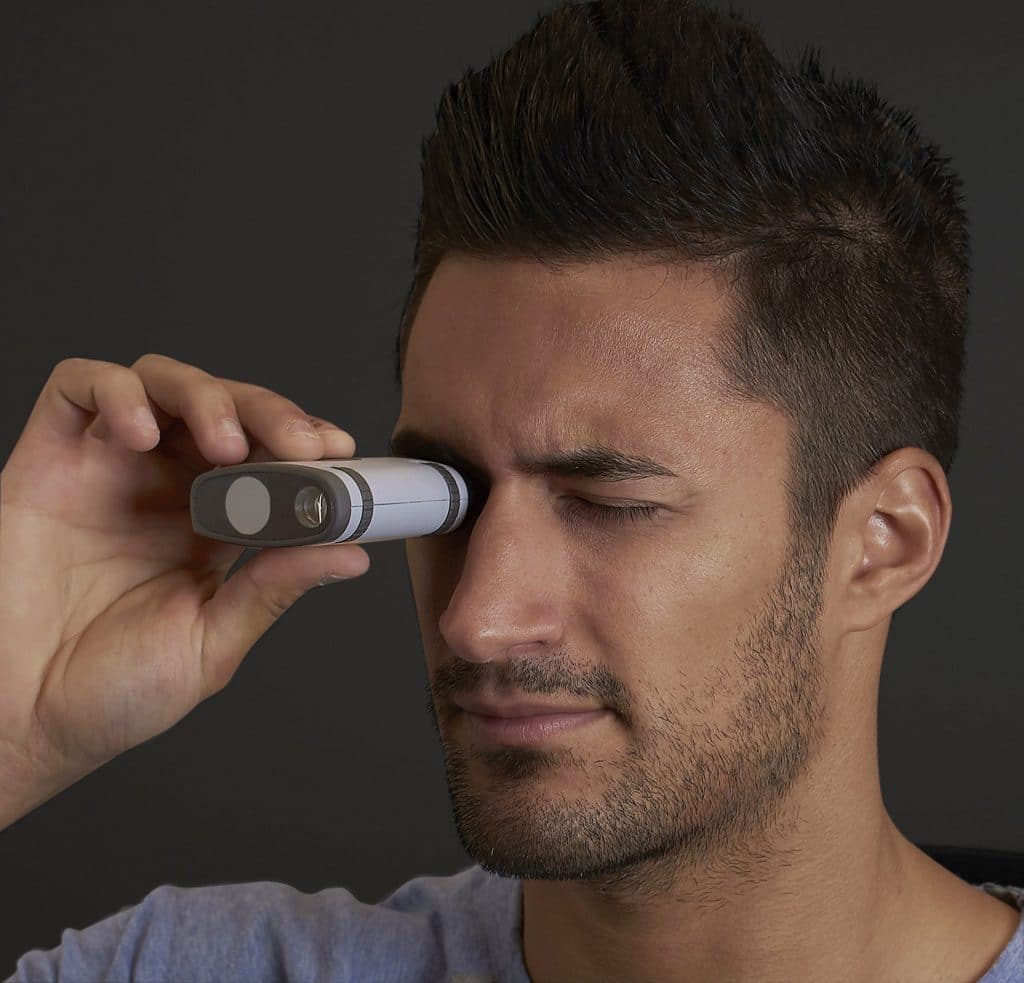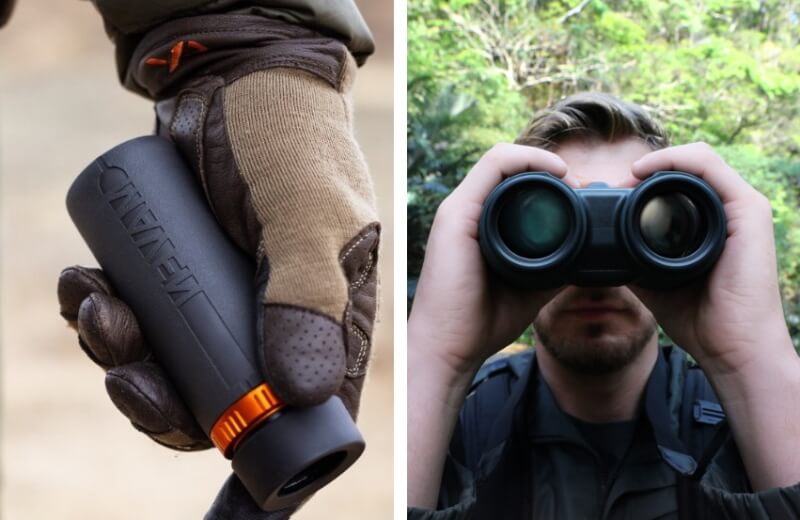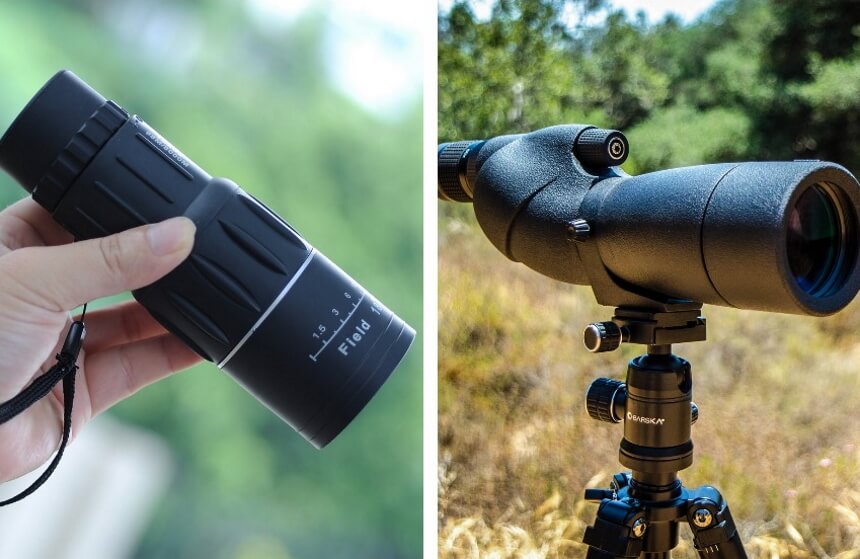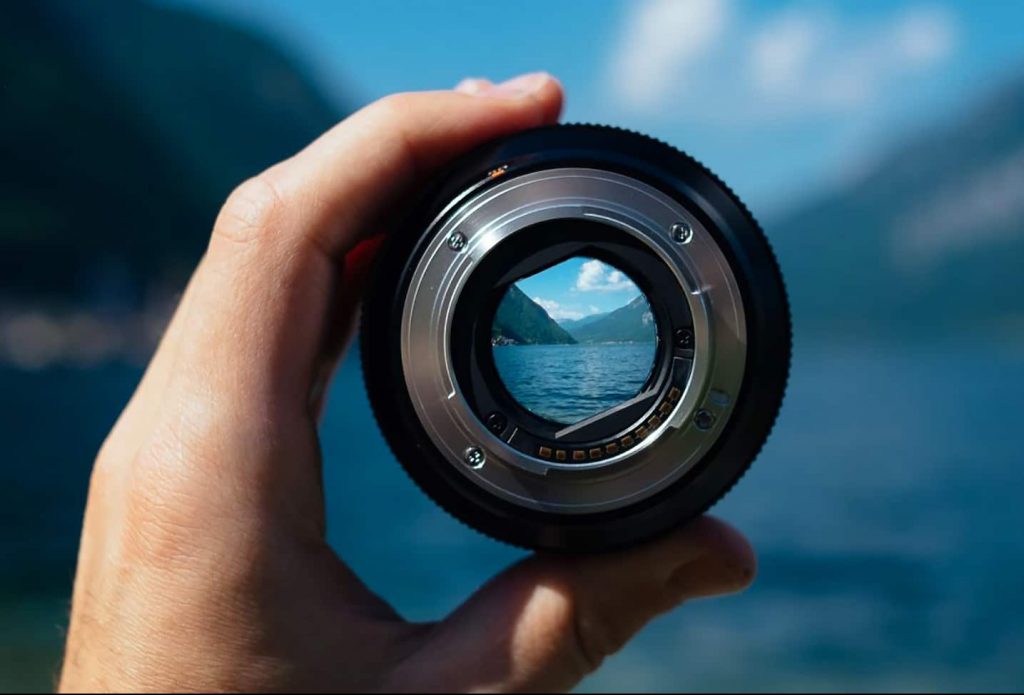

When it comes to having the right gear for all sorts of activities after dark, the better your ability will be to see through the veil of darkness, the more effective you’ll be and the safer you’re likely to stay. Offering the big advantage of being able to quickly scan wide areas at night, the best thermal monocular can aid with search and rescue missions, covert surveillance, and hunting activities.
There’s a selection of types and features when it comes to the best thermal monocular reviews, they come in all shapes and sizes, for differing costs and incorporating many designs and functions. In this article, We’re going to try our best to talk you through all these functions and to really try and narrow down to the best devices. We’ll also be taking a good look at the way a monocular works and at all the things you need to watch out for when selecting the best thermal monocular for you, and importantly, what you intend to use it for. We came up with a list of top 6 picks, and the FLIR Scout TK Pocket-Sized Thermal Monocular deserved our Editor’s Choice nomination.
Extra features: rated IP 67 – submersible in water, 5-hour rechargeable batteries, 640 x 480 display resolution This is the best thermal monocular under $1000 on our list of products and it fully deserves to hold that title because of its great value. The FLIR Scout Pocket Sized Thermal Monocular is not really made to go too far from your own backyard, but it will get you by out in the field if you need it to. It’s an extremely compact unit that does a simple and effective job of helping you to see in the dark at limited ranges. This doesn’t do any of the fancy streaming stuff that the pricier and more loaded monoculars do, but what the FLIR Scout TK Pocket-Sized Thermal Monocular does do is give excellent bang for not too many bucks at all. This unit would be great for home protection purposes or for using at night and in low light conditions for security patrols around buildings, because at a short range, it’ll work just as well as some of the more expensive monoculars. FLIR do provide excellent warranties, and some of the components are protected for ten years, making it a peace of mind purchase in that sense. Overall, if it suits your needs, the FLIR monocular is well worth thinking about as a budget scope, and if you’re not going too far, or looking too far, then it’s a great little unit. Quick Summary
Top 6 Thermal Monoculars Review 2025
FLIR Scout TK Pocket-Sized Thermal Monocular
Extra features: built-in video recorder, picture in picture digital zoom, lightweight and rugged magnesium allow housing, IPX7 waterproof
Once you’ve taken a look at the benefits offered by the Pulsar Axion XM30, we do not doubt that some of you will open your wallets willingly. This is a decision we could fully get behind.
The monocular has superior sensor resolution even though it’s not the highest in the sea of options around. When you do get to brag about your exploits with the monocular, you’ll have video evidence of the same if you make full use of the XM30.
Additionally, you get a 1,450 yards detection range, and you’ll soon find out that there aren’t many such monocular options that can top that. Also, the picture in picture digital zoom might help with the visibility of targets at long distances.
Notably, you can choose magnification between 4x-16x depending on the distance between you and your targets.
The XM30 monocular is also built with ease of use and ease of carry in mind. It only weighs a pound, and thus throwing it in your trouser pockets as you hike will be easy.
Another thing of note is the magnesium alloy housing of the monocular alongside the IPX7 rating. As such, the monocular is rugged, durable, and waterproof. We would certainly have no issues carrying this on night hunting trips.
Extra features: integrated accelerometer, 8GB internal memory, IPX7 waterproof rating, fogproof and dustproof, comes with carry case, 3-year warranty
The Pulsar Helion XP Thermal Monocular is a formidable piece of equipment and you won’t be left wanting for features and capability with this model.
This unit performs all the video streaming, recording, photography and digital capture tasks that you’ll ever need from it, with a full range of options in that area and full connectivity to Wi-Fi and to smartphones.
This monocular will detect adult sized heat signatures at up to 2,000 yards and the clarity you get from this unit is of really good quality, with everything that you observe being nicely rendered and easy to identify.
You get a full 8gb of storage space built into this device and it boasts a very good battery life, at 8 hours of continuous use. It’s waterproof to IPx7. Don’t worry about dropping it the river because it’s fully submersible for up to twenty minutes at a time, and it’s dustproof, being very durable all around. This unit is even fog proof, so that lens will stay nice and clear at all times, no matter the weather or environment.
With a 50hZ refresh rate frequency and one of the best color palette capabilities of any monocular on the market today, this device is hard to beat.
This is a great monocular for any situation or application and you’ll look for a long time before you find anything that’s better than this.
Extra features: e-zoom for focus on distant objects, inbuilt gyroscope for image stabilization, e-compass, HD display
This thermal monocular basically does everything you’ll ever need a thermal monocular to do and does it really well.
You get lots and lots of features on this unit, and it has a built-in e-compass to navigate with, making it a very useful tool to have in the field – especially at night. You can carry one less item with the ATN OTS-HD 384 9-36x, because this beauty will always have you heading in the right direction.
The Pulsar also comes with a built-in gyroscope, which performs the action of steadying up shaky hands and levels everything out to give you a clear and crisp image, even if you’ve been running around are out of breath.
The smart rangefinder that’s incorporated means that you get a very accurate reading of how far away or near an object is when you’re viewing it and that’s a great feature in terms of safety, as well as making things a lot easier for hunters that want to know when a target is in the right vicinity to be able to go to their gun.
Some nice additional features here are the e-zoom option – which gives excellent clarity for far away objects and targets, and the Pulsar unit also comes fully equipped to stream and take video and photos, if you’re doing something that needs to be recorded for evidence purposes or you just want to show off about a successful hunt.
An all-round great monocular for the field, and it won’t disappoint.
Extra features: inbuilt gyroscope and compass, e-zoom facilitates focus on distant objects, HD video recording and photos
So, this monocular is the ATN OTS-HD 384 Thermal Smart HD Monocular 1.25-5x. This isn’t the cheapest unit on this list, and it isn’t the most expensive, but it does share some of the great features that the other ATN monocular further up this list does, and that’s got to be worth discussing. This is the little brother of our winner here today, and it certainly packs a punch.
With this ATN model, you still get the built-in gyroscope, which is a massive bonus for those more active in the field while using their monocular, as it greatly reduces or eliminates a shaky picture when you’re breathing hard or trembling from the cold – which is great for outdoor winter use.
You also get the same incorporated e-compass on this model as on its bigger brother, which is such a useful feature for people that are visiting areas that they’re not too familiar with and wandering around at night.
Again, as with the other ATN on this list, you get ATN’s excellent e-zoom capability, which means excellent clarity at longer distances and will be a great feature for any user to have, in many instances.
This model is also fully capable of video streaming and video recording, and it’ll also take great photos in the field.
All-in-all, the ATN OTS-HD 384 Thermal Smart HD Monocular 1.25-5x is an excellent piece of kit for many users to have, in all sorts of settings, and for all types of application. A great monocular.
Extra features: 640 x 480 display screen, freeze frame feature, comes with wrist strap
The FLIR Scout III-240 Thermal Imager is the simplest to use monocular on our list but still packed with enough technical wizardry to be of great use to a lot of hunters and other users in a lot of different settings and situations, in all kinds of weather.
Boasting excellent waterproofing, at IP67, and being rugged enough to take some drops and knocks along its way, the FLIR unit doesn’t pretend to be anything it’s not. It’s a reasonably priced scope and it manages to occupy its place in the market whilst holding its own.
The battery life – at 5 hours – isn’t the greatest on this list but what it lacks in that department, it makes up for in economy and practicality, so it’s a decent option for anyone that can afford to sacrifice a little bit of continuous use in order to keep some bucks in the bank or to spend on other equipment.
The Scout does have a very decent and usable color palette, so it is very versatile in different light conditions and in different environments. If you’re a hunter, it gives plenty of scope to experiment with different color modes and different targets.
This lightweight (12 ounces) monocular is a very good option for those that don’t want to bother with complicated controls and want a rugged monocular to use on the move. It definitely deserves its place here.
How do you choose the best thermal monocular for your needs? In this buying guide, we’ll go through important features you should keep in mind when choosing the perfect model for you.
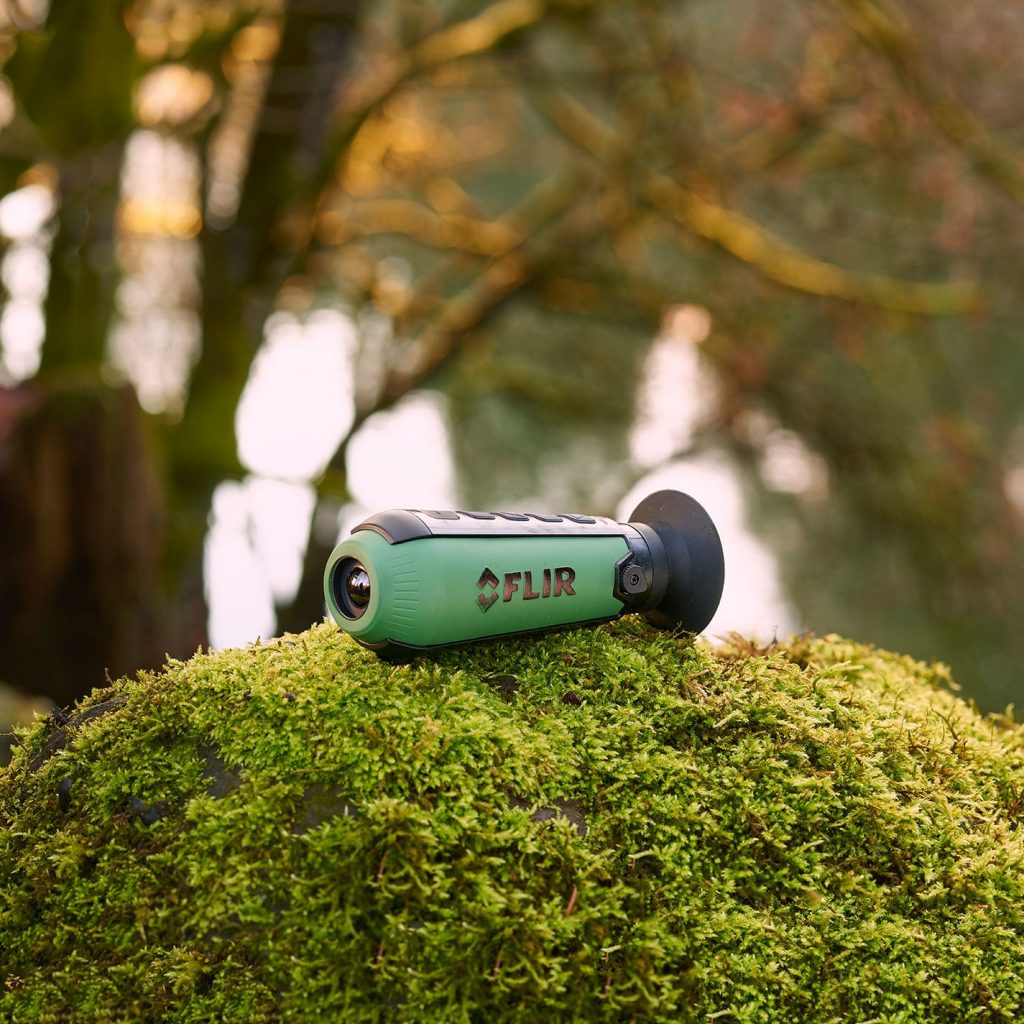
Having said that, weight is another important factor for most hunters who move about and for nearly all observers, because there’s much equipment involved, and the weight soon accumulates. Hunters for example, will be carrying a firearm or bow, ammunition, and lots of other things, so we have to be careful generally when we’re heading into the night for whatever reason, that we don’t take too much equipment with us and weigh ourselves down unnecessarily. Too much gear is counter-productive and can take all of the fun out of getting out there and doing what we love best – in whichever field a hobby happens to fall.
Many wildlife watchers, hunters and law enforcement agents will sacrifice some of the capabilities of heavier optics like binoculars to save weight and be able to move around more quietly and more effectively. This need often sees people turn to the use of a monocular for when scanning wider areas at night.
The monocular offers much of the benefits of its heavier and bulkier cousin but offers the advantage of being pocket sized and really light and easy to accommodate on the move. You can easily identify targets at many ranges and scan for activity in a similarly effective fashion with a good monocular, you’ll have a far better chance of spotting and quickly identifying a higher number of targets – be they rare animals that you wish to study or observe, criminals, or farm pests.
As with all devices that are designed to aid vision at night, the better quality an item you are able to afford and choose, the better the results you’ll generally have, the greater the effectiveness, strength and waterproofing the device will most likely feature, and the more things you’ll be able to accomplish with it.
When you’re looking to buy thermal optical devices, there’s no substitute for having a decent and realistic budget when you set out. It really will affect your chances of getting a device that’s going to make you happy and do all the things you’re going to need it to do. The technology that facilitates night vision will cost a minimum amount and dipping too low in price will see a massive downturn in the quality available. It’s important to set a decent budget for the task and then to choose wisely.

We’ll look at things like magnification and waterproofing, as well as color modes and pricing, and you’ll start to develop a more defined idea of the sort of device you’re going to be choosing, based on a combination of all that we’re about to discuss. There’s a great selection of devices on our list that have been chosen to provide a reasonably varied selection that will suit most activities and users.
Most thermal monocular models come with a sensor of different degrees of performance. The resolution will be defined like a screen resolution is, for example: 450×450.
The thermal sensor is an important component in a thermal monocular. It detects the amount of heat that is being emitted by the different objects being viewed.
The sensor then maps and displays the heat signatures to varying levels, depending on the amount of heat being emitted.
The resolution will be directly linked to how big the aperture is, and this can be of major importance – especially if you intend to observe at longer ranges. Resolution capabilities will probably be lesser on cheaper devices as it’s a cost-adding feature, and you’ll really need to be cautious that you don’t go too low in budget to keep the device usable for the tasks and situations that you need it to work for.
If you need to identify targets reliably at longer distances, and that can be a big safety issue when out hunting, you’ll definitely need to consider a monocular that will provide you with a clear enough level of resolution for you to be able to tell the difference between a pig or a coyote, and indeed a fellow hunter or a person out walking at night, before you even think about shooting anything.
You’re looking for a piece of equipment that’s able to scan a wide field of vision when you’re looking for a monocular, so clarity and the ability to get a good look in detail is something that you’re absolutely going to need.
Magnification is another feature that will add cost onto the thermal monocular you’re considering as the levels at which it can perform increase. This fact makes it really important to not buy a monocular with greater degrees of ability for magnification if you’re only ever going to use it in the forest or at much shorter distances than the costlier devices are capable of tackling effectively.
The technology required to increase the levels of magnification in a device is not cheap, and that capability will affect the overall cost of the monocular massively, so this is one of those features where it’s very wise to have a very defined idea of usage and the limitations of that before you rush in and buy something. Similarly, don’t hold back on this feature if you’re going to be using your device to look a very long way regularly or semi-regularly because you’re going to need a good image at a distance that’s out in that sort of range. In short, you need to keep a level head, don’t buy what you won’t need, but be very realistic in buying what you do need – especially with hunting applications, as that’s where safety becomes a deciding factor.
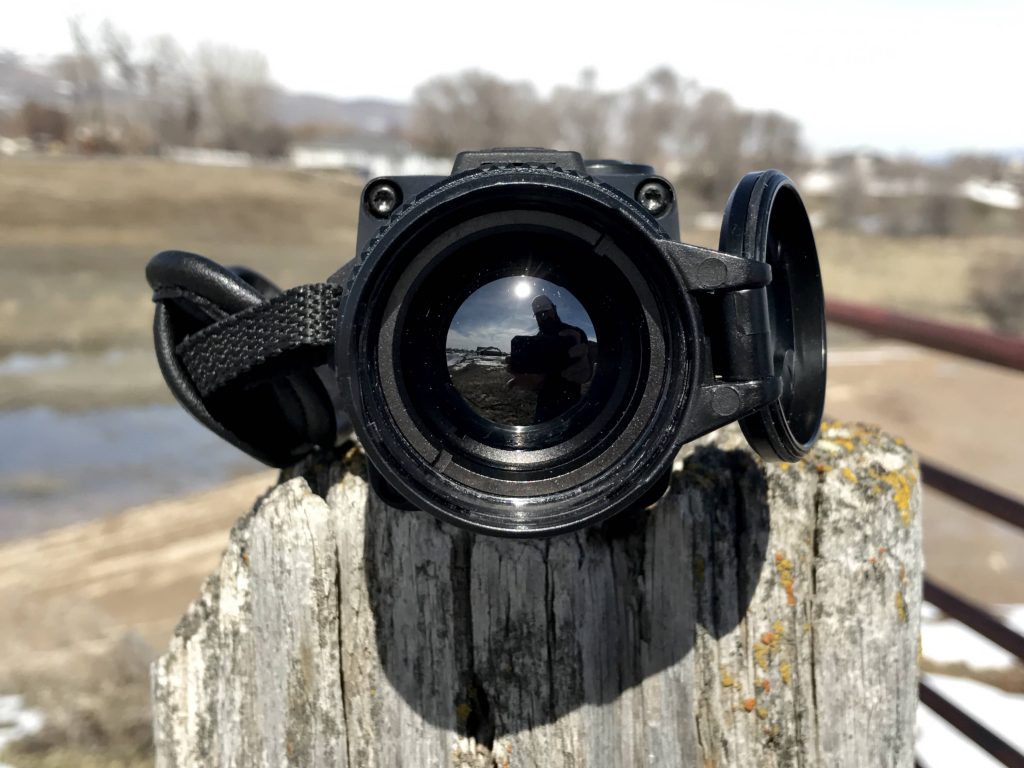
A monocular is used to enable the viewing of a wide range, so as to make it easier and more efficient to scan bigger areas for whatever you’re trying to spot. You’ll want to ensure that the thermal monocular you’re selecting to buy will give you a wide enough viewing angle. This will mean you can survey larger areas quickly and reduce your chances of being spotted, while making sure that you catch whatever or whomever you’re looking to see.
You’ll often want to use different color modes to use your thermal monocular for different tasks and in different settings and light conditions. The better the design and the more expensive the monocular you look through, the better the range of color modes is likely to be and as with most items like this, a greater user experience is far more likely when you buy better.
It’s a fairly unavoidable truth that far more versatility will probably result from a greater spend. A good thermal monocular will operate more effectively, in more conditions and settings, if you’ve got a greater selection of color options. If you’re looking to reliably identify and surveil targets at longer distances, for example, a sepia option provides the best contrast at night. Violet color mode will enable you to spot targets faster when you’re scanning wider areas before you go to a rifle scope if you’re hunting.
Basically, the wider the range of color modes available on your monocular, the wider the range of activities you’ll be able to perform quickly and effectively.
A great number of color modes is extremely beneficial in many circumstances and this, although often overlooked by buyers that haven’t used thermal imaging equipment much in the past, is a very important consideration when you’re assessing the devices out there within your price range.
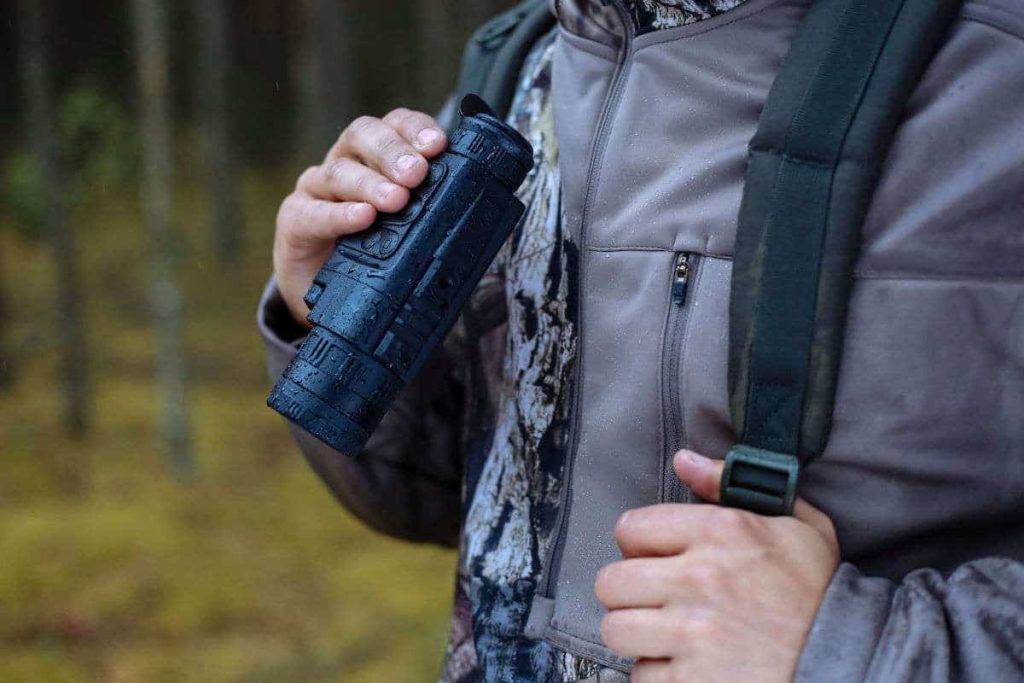
Some devices even have the ability to stream live footage from the monocular, and this is a feature that can be useful in other applications than just showing off during a hunt or for fun. It can prove very useful, as can the ability to just record footage, in law enforcement and investigative situations, or even as a means to capture special moments when out observing wildlife. Different devices have this, and some don’t. Most will work with both iOS and Android, but it’s best to check before you buy.
This probably won’t be a section you’ll be considering if you’re looking for the best thermal monocular under $1000.
Dimensions and size will pose different concerns for differing buyers, and it can be a massive consideration if whatever you’re doing means carrying a lot of different pieces of equipment. Weight and bulk will soon become cumbersome when everything adds up. Portability is nearly always a nice thing to have, when engaging in many sorts of activities, in all sorts of settings and conditions. Make your own decision based on what matters most to you.
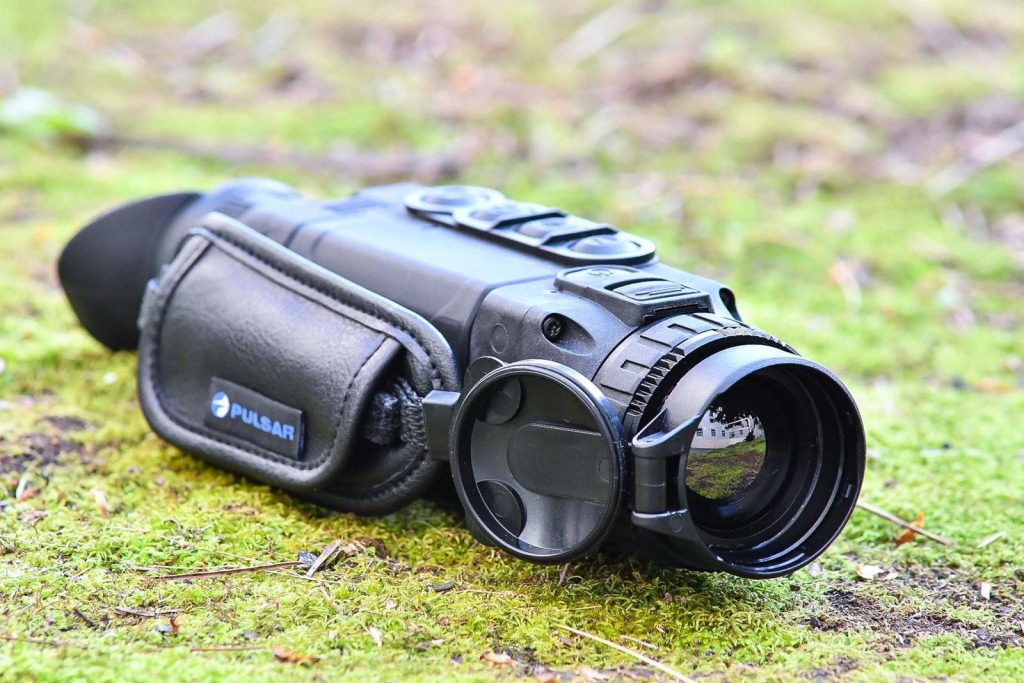
Anything that is going to get used externally at night needs to have some built-in durability, but like anything else, consider how you intend to use the monocular at the point of buying it and act accordingly on that.
As with durability, waterproofing is going to depend largely on your own particular method of use. If you’re frequently out and hunting at night in bad weather, or you tend to be splashing around in streams and rivers, then you’ll need to strongly consider a waterproof model, such as the Pulsar Helion XP50. If you’re sitting in a vehicle watching criminals or watching wildlife from a covered area, then this isn’t going to be as important a factor for you – if at all.
Choose carefully though, because you’ll pay for a higher level of waterproofing, even if you never get to use it.
Items that you’ll need to consider buying, if they don’t come in the package, are a lens cap – which will protect the lens on your monocular, a good carry case – which will stop your monocular getting damaged or dirty unnecessarily, and a good quality lens cloth – because you will need to clean it regularly and you’ll want a purpose made cloth that won’t scratch or damage the lens.
Warranty terms and lengths will vary. A comprehensive warranty with a good timeframe can often indicate manufacturer confidence in a product and therefore signal quality. The best thermal monocular for the money could well be one that has a long guarantee.
Thermal monoculars fall into many pricing categories, but generally, the majority of models are over $1000-mark. A good way to decide what to spend is to work out all the must-have features you need for your tasks, and then a list of desirable features too. Look for devices that you can afford which satisfy all your basic requirements, and then if you have cash to spare, you can get into the desirable features. Buy the best monocular that you can afford.
So, there we have it. We’ve done a thorough analysis of six different monoculars here and the stand-alone winner was the FLIR Scout TK Pocket-Sized Thermal Monocular. This monocular is small-sized, perfect for casual use.
It was closely followed in second place by the Pulsar Axion XM30 which is an IPX7 waterproof monocular has superior sensor resolution and built-in video recorder.
Coming in at third best was the Pulsar Helion XP50 Thermal Monocular. It’s a monocular with an impressive range of up to 2000 yards and a magnification of 2.5-20x.
So, what are you waiting for? Night time is approaching and there’s much out there to see!

